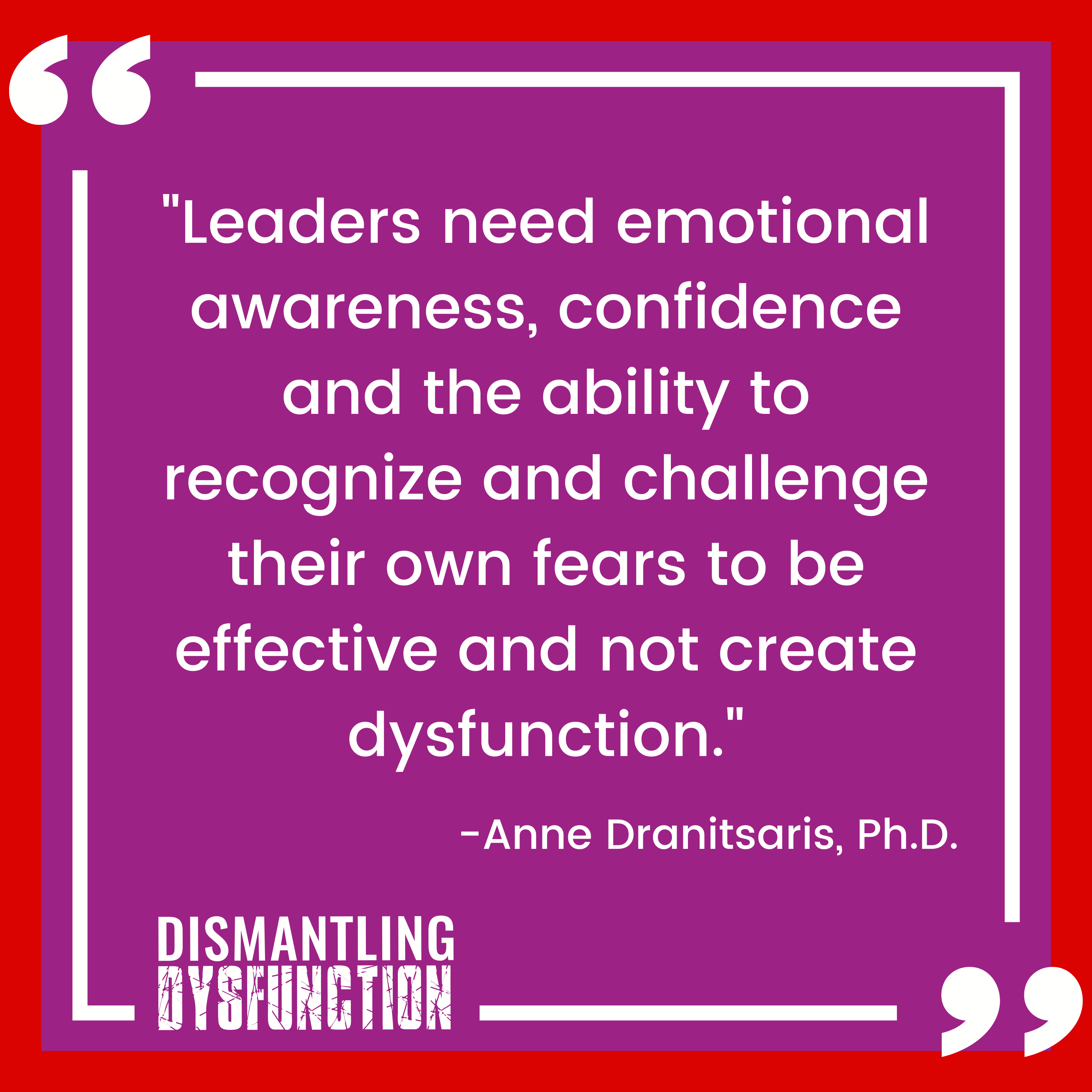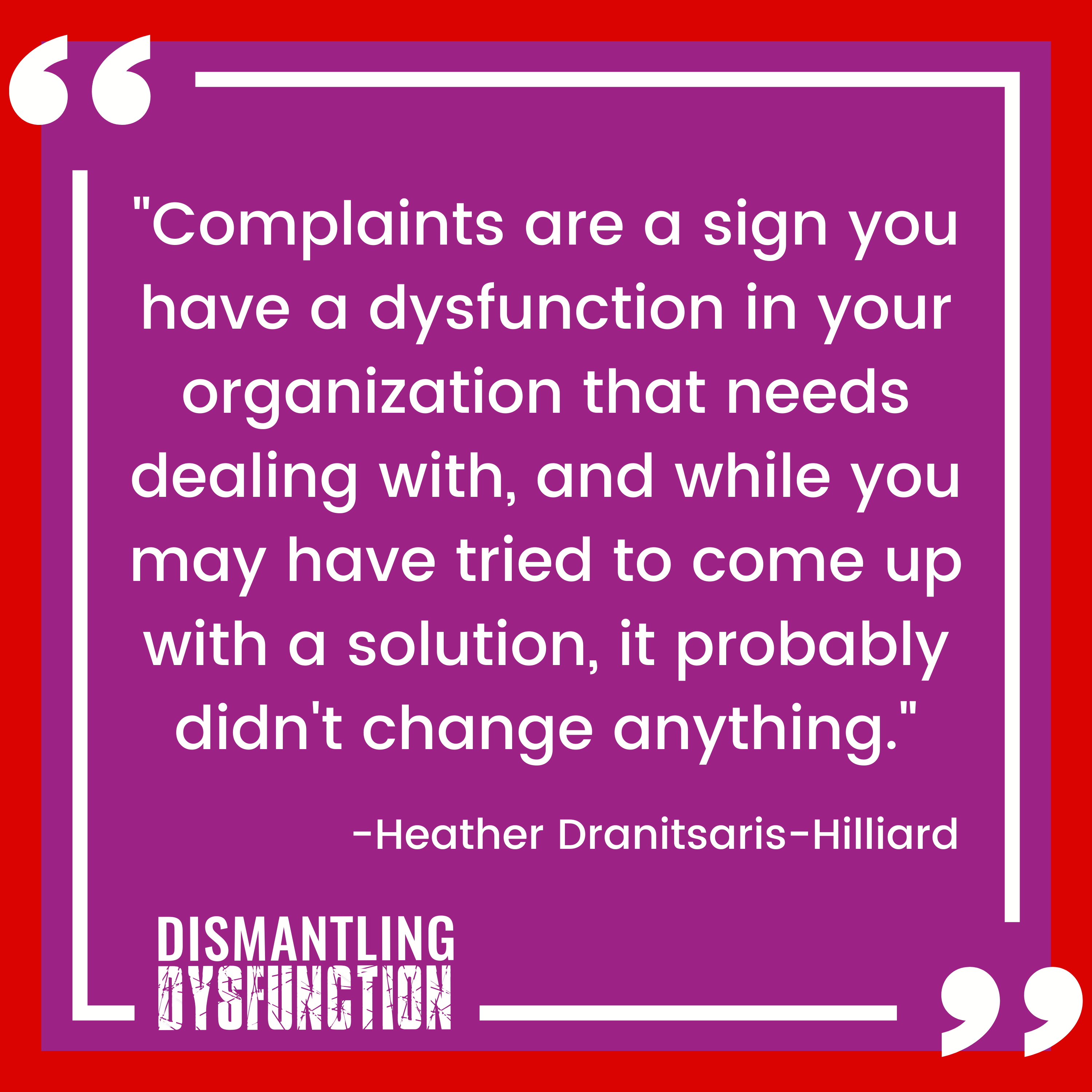Episode #3: Key Organizational Dysfunctions (Part 2)
Are your leaders constantly complaining and not doing anything about it? Do members of the senior leadership team gossip about each other, all the while, promoting the notion that they are a high functioning team? These are just two of the many symptoms of organizational dysfunction our hosts Dr. Anne Dranitsaris & Heather Dranitsaris-Hilliard have seen over and over again when working with leaders in businesses of all sizes and complexities. In today’s episode, they will continue their “dysfunction buffet” introducing three more of the most common dysfunctions they’ve worked with. They offer their insights into the root causes of dysfunctions and share examples of real-life client stories – including the good, the bad, and the ugly. They focus on the pain points of each dysfunction and how they brought client organizations from dysfunction to high-functioning.
If you want to know more about Anne & Heather’s work with dismantling dysfunctions at Caliber Leadership Systems, check out:
https://dismantlingdysfunction.com
https://www.dranitsaris-hilliard.com
Stop contributing to organizational dysfunction. Pick up your copy of So, You Think You Can Lead?: A Guide to Developing Your Leadership Authority and Potential
Make sure you sign up for our weekly newsletters for tips on how to dismantle dysfunction and develop your leaders: https://bit.ly/dismantlingdysfunction
Are you dealing with an organizational dysfunction you need help with? Or do you have a story you would like to share on our show? Contact us at [email protected].
IN THIS EPISODE:
[00:00] Episode introduction and overview
[03:08] A working definition of dysfunction
[04:20] How to look at dysfunction holistically
[05:43] The dysfunction of stagnation
[08:29] Client examples of stagnation
[11:29] The dysfunction of accountability
[13:54] Client examples of accountability
[16:34] The dysfunction of neglect
[20:33] Client examples of neglect
[25:18] Recap and what you can do starting now
KEY TAKEAWAYS:
- When leaders fail to continue to grow the business, working instead to preserve the status quo, the Dysfunction of Stagnation (aka Stuck in the Weeds) is created. Leaders at the top work really hard to stay in their comfort zone, avoid change, and refuse to set goals. Their mindset stifles growth resulting in a demotivated workforce, loss of top performers and market share.
- Fear of being perceived negatively can cause leaders to create the Lack of Accountability Dysfunction (aka Employees Should Know). It is contributed to by leaders who want to be seen as caring, good leaders who don’t micromanage. This leads to poor productivity, reduced quality and even bad behavior.
- Many left-brained dominant leaders cause the Dysfunction of Neglect (aka Not My Job) when they don’t consider it their job to nurture and engage their employees. They focus almost exclusively on business outcomes rather than on their employees’ needs. This creates a culture of fear, lack of bench strength and low employee retention.
- Leaders need emotional self-awareness, confidence and the ability to recognize and challenge their own fears to be effective and not create dysfunctions. If an organization is experiencing any type of dysfunction, leaders must take a holistic approach, which includes focusing on the needs of their people. They must also understand how meeting those needs will best meet the needs of the business.
- Leaders will try to distill the dysfunction down to one thing — one person, one issue, one system etc. as the reason behind it to make it seem smaller so that it’s more manageable to deal with. They end up playing dysfunctional whack-a-mole, dealing with one symptom and then having another emerge.
- Leaders can start to dismantle the dysfunction by getting to know the needs of the people and really understanding how meeting those needs will best support the business to achieve its potential. Employees need something to aspire to, something to belong to, and an environment where their talents and unique contributions are cared for and nurtured.


Did you enjoy this episode?
If so, sign up for our newsletter and get exclusive access to some of our best content!
Plus, we’ll keep you in the loop – you’ll be among the first to know when we’ve hit “upload” on a new podcast, article, or YouTube video!





